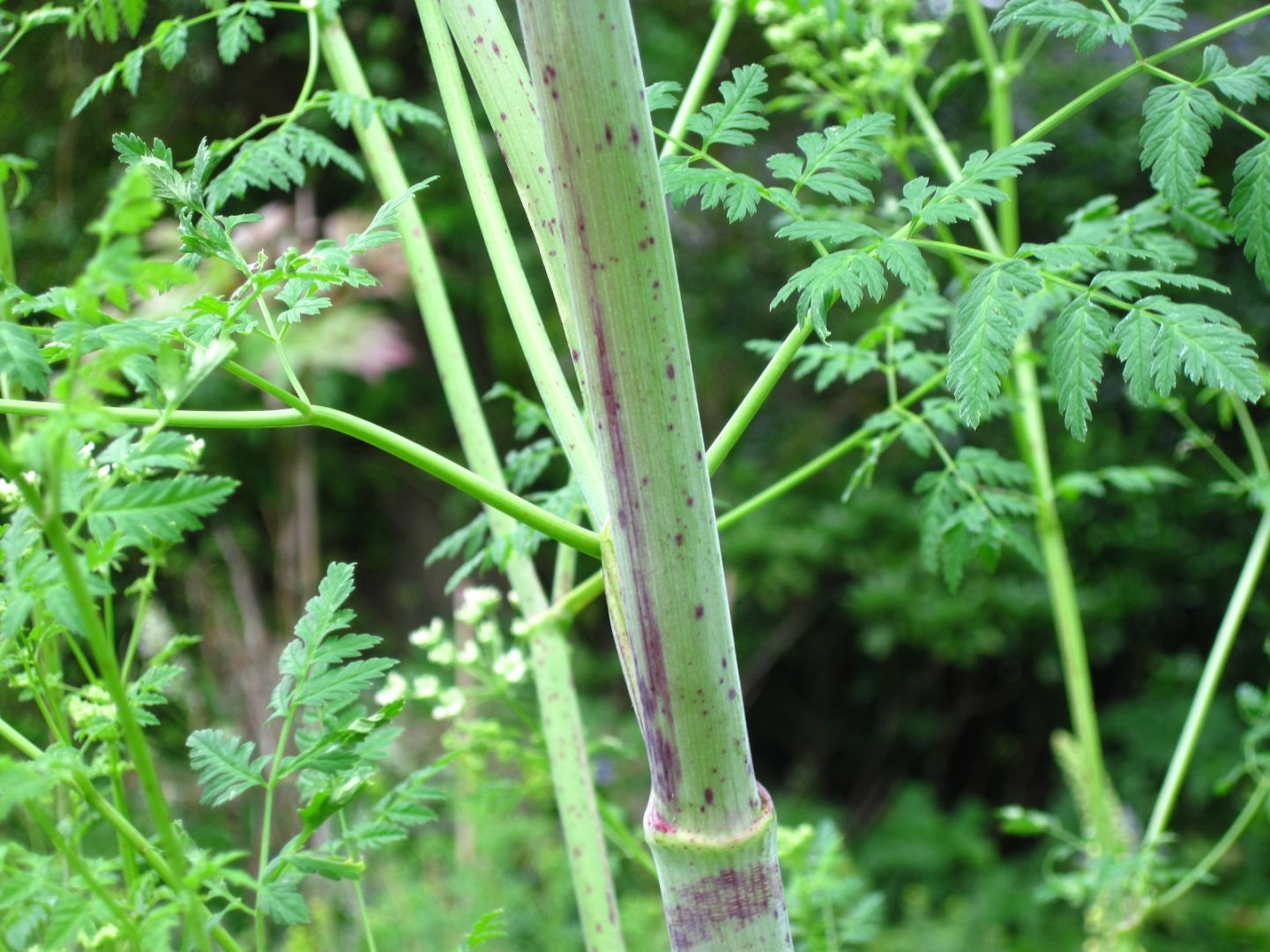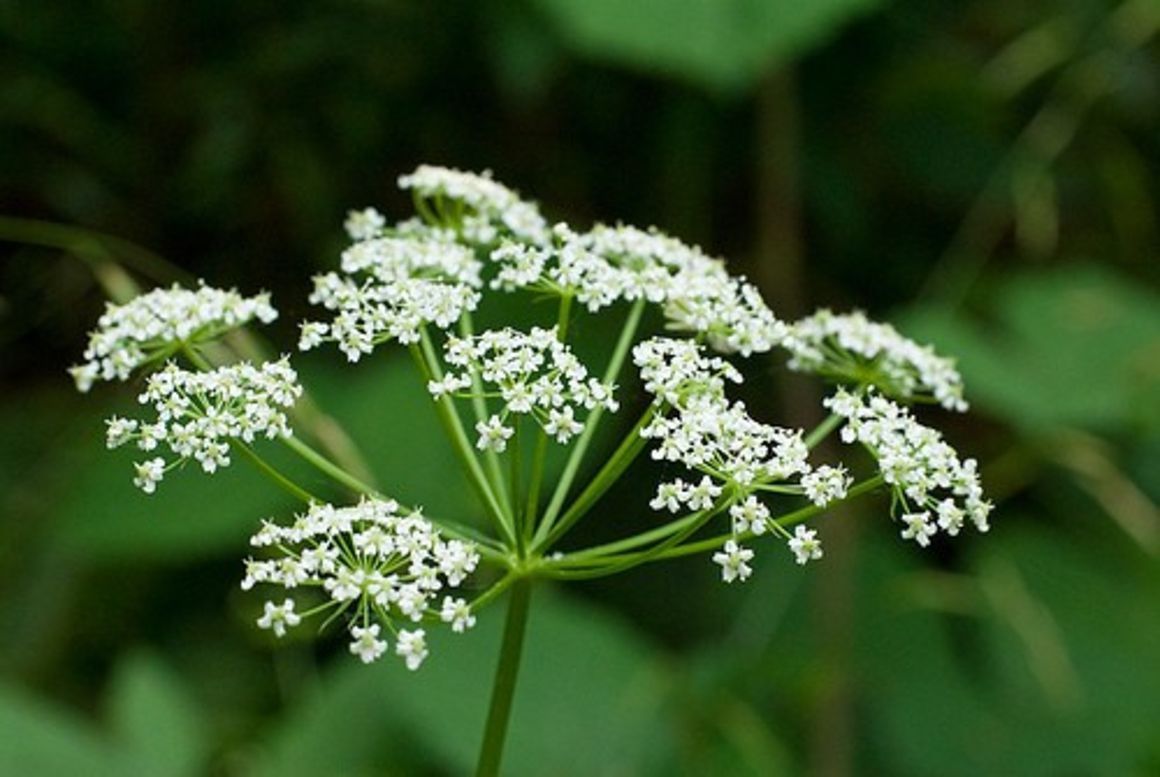What is Poison Hemlock?
Poison hemlock belongs to the carrot family, Apiaceae (formerly Umbelliferae). It shares many characteristics with other notable non-native members of the carrot family found growing in Ohio such as Queen Anne's Lace (Daucus carota) and Wild Parsnip (Pastinaca sativa). Indeed, some of the accidental poisonings in the U.S. have occurred with people mistaking poison hemlock for Queen Anne's Lace.
Poison hemlock contains highly toxic piperidine alkaloid compounds, including coniine and gamma-coniceine, which cause respiratory failure and death when ingested by mammals. The roots are more toxic than the leaves and stems; however, all parts of the plant including the seeds should be considered dangerous. It is a common misconception that poison hemlock sap will cause skin rashes and blisters. In fact, poison hemlock toxins must be ingested or enter through the eyes, cuts, or other openings to cause poisoning.
All stages of the poison hemlock plant have bluish-green leaves that are 3-4 times pinnately compound, and the deeply cut parsley-like leaflets have sharp points. Flowering plants have hairless, light-green to bluish-green stems that are covered with obvious purplish blotches. Clusters of tiny white flowers are borne on structures called umbels that look like upside-down umbrellas.
How Can I Identify it?
Look for the purple splotches on a smooth (hairless) stem.

The flowers are white and resemble Queen Anne's Lace, but are larger and more open than Queen Anne's Lace.


